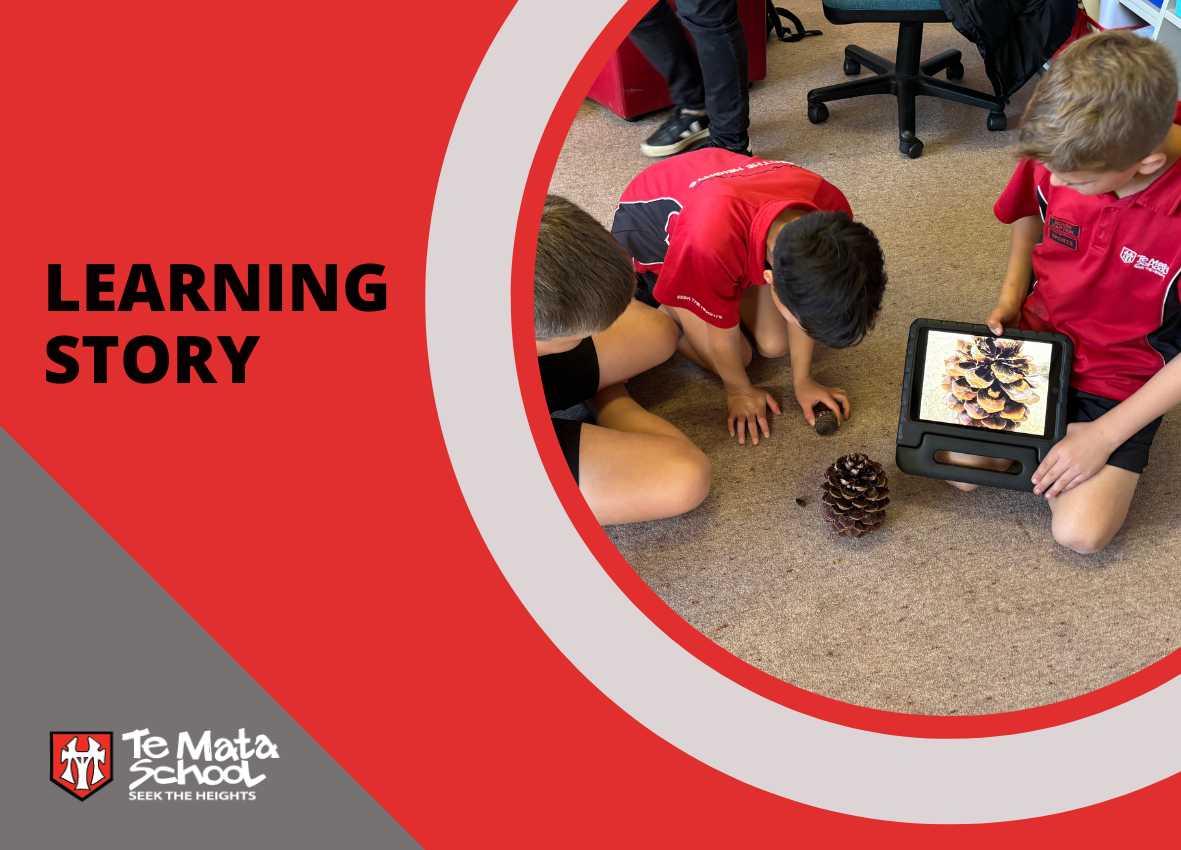


Literacy + Science = Reaction
#WholeSchool

When students actively engage in science, reading and writing become vibrant and dynamic experiences.
At Te Mata School, we have specialised Science teachers. From Year 0 to Year 6, students engage in science throughout the year. They are immersed in rich, meaningful, and motivating contexts. Scientific learning is continuous and cumulative, ensuring that by the time our students leave our school, they are thinking and acting like scientists. Our specialised teachers integrate reading and writing into their programs, recognising the importance of dedicating an hour each day to these essential skills. All teachers across New Zealand receive classroom release time throughout each term, across the school year. At Te Mata School, we strive to maximise all learning opportunities, believing that providing specialised teaching during this time is key to maintaining a strong focus on literacy. Typically, each student will participate in four science sessions per term.
When you walk into a science classroom, you will hear students discussing experiences, predicting and hypothesising as to what might happen next, and summarising finds or observations. Teachers nurture oral language skills as they provide a strong foundation for learning to read and write. “Reading and writing float on a sea of talk” (James Britton). You will see students involved in experiments through active participation, role play and noting down/writing observations. They are asked to read instructions, research content and present findings in multimodule ways: e.g. posters, completing booklets, writing in their books and posting content on Seesaw (photos/video). “The real process of education should be the process of learning to think through the application of real problems” (John Dewey). In Science, students may do this by:
Year 1 - Ideas & Organisation Learning Goal from the Te Mata School Writing Progressions:
“I can write a list. I can say and write my ideas in order using a picture plan”.By: Completing written tasks that include pictures & diagrams (Labelling diagrams).
Year 1 - Reading Little Learners Love Literacy Scope & Sequence.
By: Watching special material for inspiration, role play to describe chemical reactions, repeated exposure motivational books or content linked to science related content & poems.

(referenced from: https://www.littlelearnersloveliteracy.com.au/blogs/what-is-llll/planning)

Cereal shapes were used to visually represent how the particles of matter behave inside solids, liquids and gases.



Across the school students use a variety of tools to complete tasks; iPads to capture moments in time, books and workbooks to record findings/observations.
Year 6 - Reading, discussing “how the results of my critical analysis influence my feelings, thoughts and actions”.
Discussing texts and making connections to real life contexts; requiring inference and reorganisation of scientific or observational information.
Year 6 - Vocabulary Learning Goal from the Te Mata School Writing Progressions: “I am beginning to use different topic specific vocabulary and sophisticated language for effect:
Simile
Metaphor
Onomatopoeia
Emotive language
Content specific language.”
By: Recalling & sharing details after experiences using topic specific vocabulary.


Year 5 & 6 Living World lessons - Observational data was collected and classified.

Learning is practical and hands on, creating opportunities for students to expand their knowledge of the world around them.
So, what does this look like in our classrooms? How do our students feel?
What types of learning opportunities might you see:
For example with Mrs Morgan: Physical changes & Chemical reactions (Year 5 & 6).
What: Making bath bombs - to see how chemicals change - 'What is a chemical change? What is the difference between a physical change and a chemical change?’
The students created two bath bombs. One to have as an experiment, to add to warm water, to observe the chemical reactions. And the other to package and then give them to someone for a special occasion.
The students were asked to:
Research bath bomb packaging for inspiration.
Create the box/net, container for the bath bomb.
Label the container.
Reading: the students referred to recipes to know how to make the bath bombs, they had to read carefully and reread as needed. They had to develop topic specific vocabulary including: Citric acid, baking soda, epsom salts, cornflour.
Writing: They recorded predictions, observations and planning for containers/labels in a workbook. They created published content for an audience.


Bath Bombs created!
For example with Mrs Chatfield: The Apollo 11 Mission (Year 3 & 4)
What: Students trying to get an astronaut back to planet earth. Working in threes. Involved in role play:
One person pretending to be an astronaut up in space, another an engineer in Houston Texas and another person, the communicator. The use of Lego to enact a real life scenario, the Apollo 11 mission when the astronauts go stuck in space. If the communicator was able to clearly communicate the instructions, then the engineer and astronaut in space were able to build the exact same object, meaning the astronaut could make it back to earth. All children switched roles to ensure each person was able to experience each role.
Comprehension/Digital Rich Model analysis: They watched the start of the Apollo 11 Movie, so they could see what happened in space. They also watched the landing in space. Students made 'connections', enabling them to understand what it might be like to take on either the role of the communicator, engineer or astronaut.




Mission accomplished - the Astronaut made it home!
Article added: Monday 26 August 2024


Contact
Location